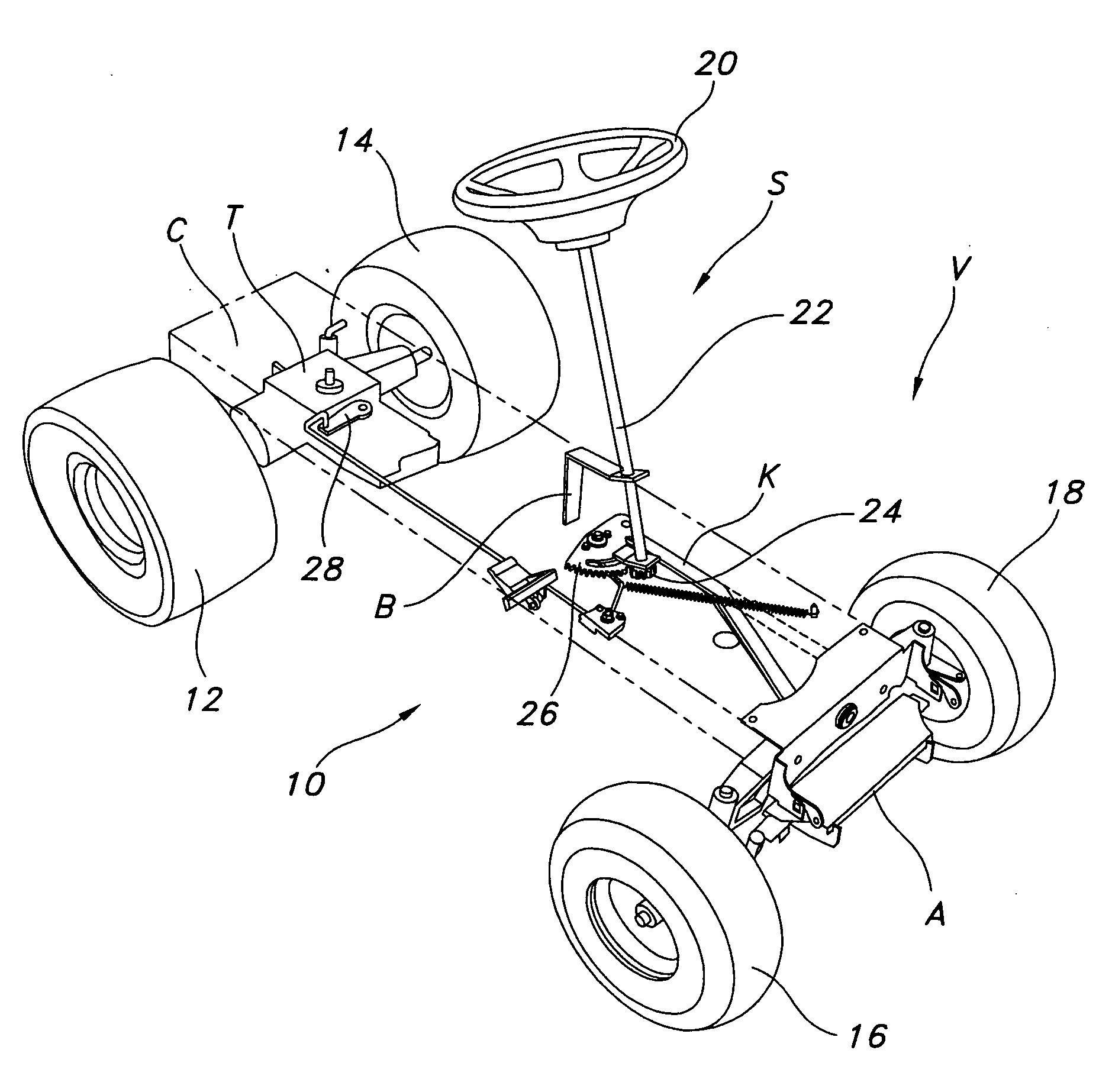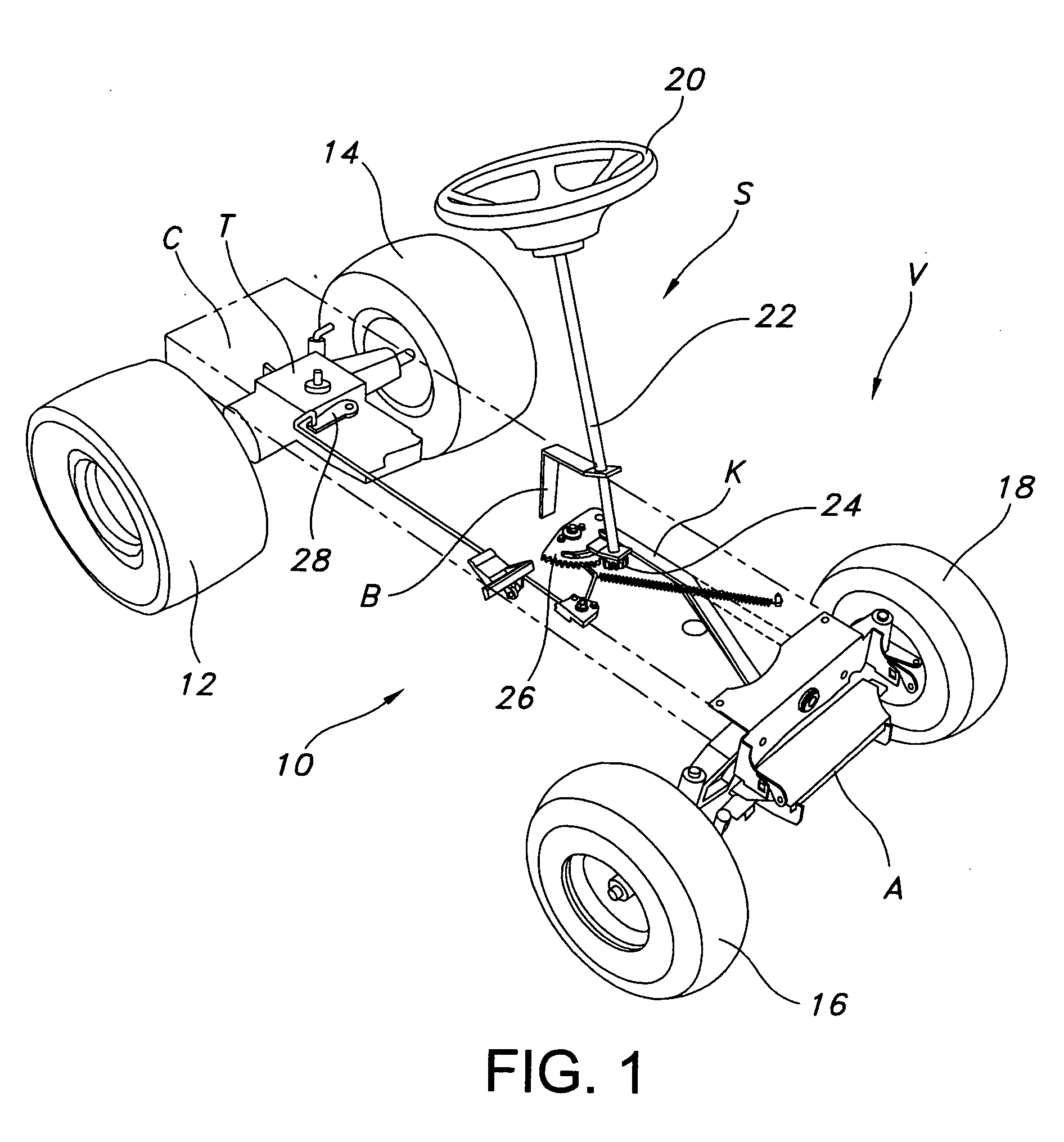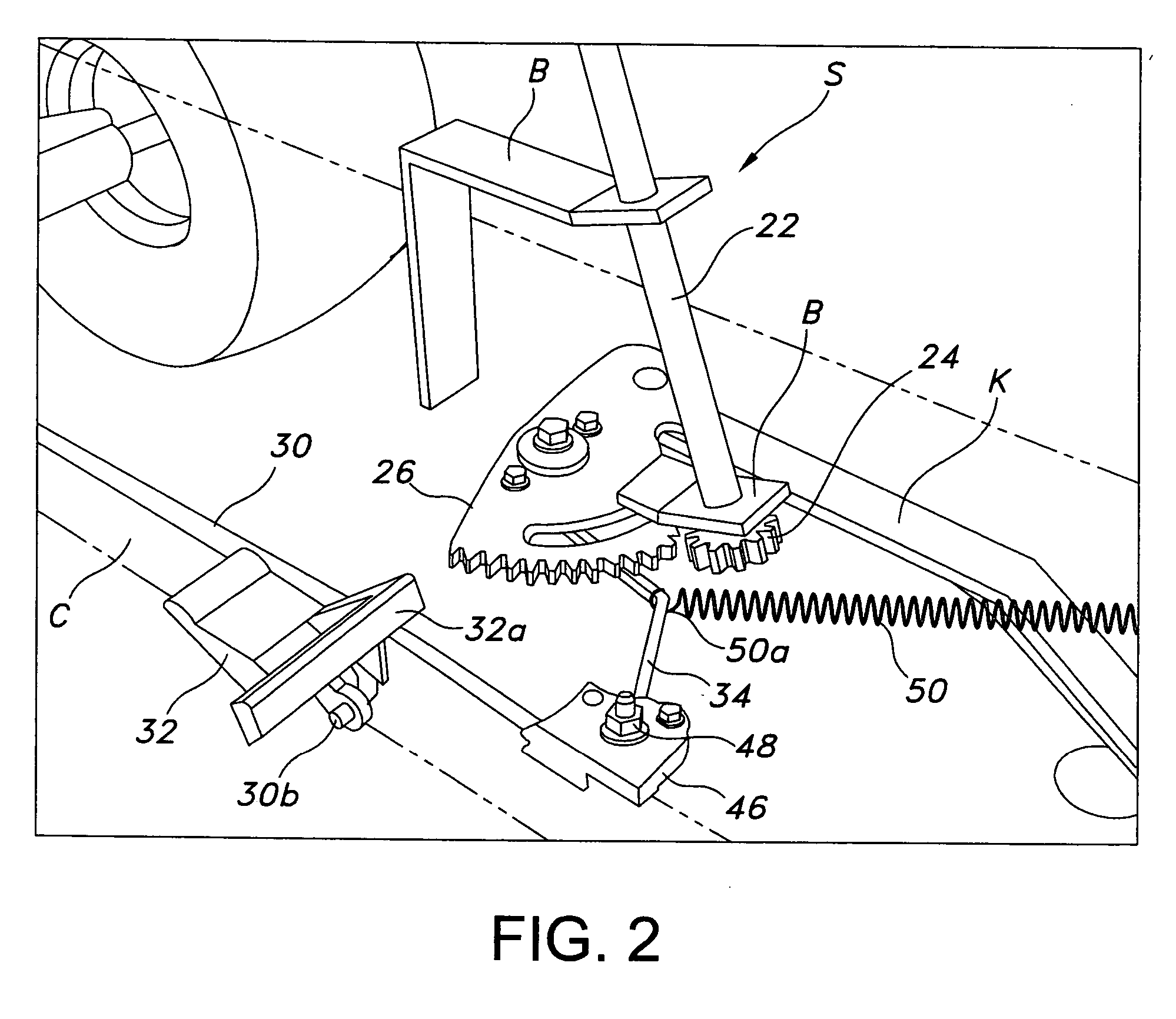Vehicle control system with slow-in-turn capabilities and related method
- Summary
- Abstract
- Description
- Claims
- Application Information
AI Technical Summary
Benefits of technology
Problems solved by technology
Method used
Image
Examples
Embodiment Construction
[0042] Reference is now made to FIG. 1 of the drawings, which depicts a vehicle V including the control system 10 with slow-in-turn capabilities forming one aspect of the present invention. The vehicle V is of the self-propelled type and, hence, includes a motive device for driving at least one ground-engaging structure, such as a wheel. In the illustrated embodiment, the motive device comprises an onboard transmission T for driving a pair of wheels 12, 14 mounted at the rear end of the frame forming part of the chassis C of the vehicle V at a selected speed and in a selected direction. The transmission T may be of the hydrostatic variety having three distinct operating modes (forward, reverse, and neutral) with variable speed control in at least the mode corresponding to forward travel. Alternatively, as discussed further below, the transmission may be of the belt-driven mechanical variety, including one with a forward drive mode having a plurality of different speeds (e.g., a five...
PUM
 Login to View More
Login to View More Abstract
Description
Claims
Application Information
 Login to View More
Login to View More - R&D
- Intellectual Property
- Life Sciences
- Materials
- Tech Scout
- Unparalleled Data Quality
- Higher Quality Content
- 60% Fewer Hallucinations
Browse by: Latest US Patents, China's latest patents, Technical Efficacy Thesaurus, Application Domain, Technology Topic, Popular Technical Reports.
© 2025 PatSnap. All rights reserved.Legal|Privacy policy|Modern Slavery Act Transparency Statement|Sitemap|About US| Contact US: help@patsnap.com



